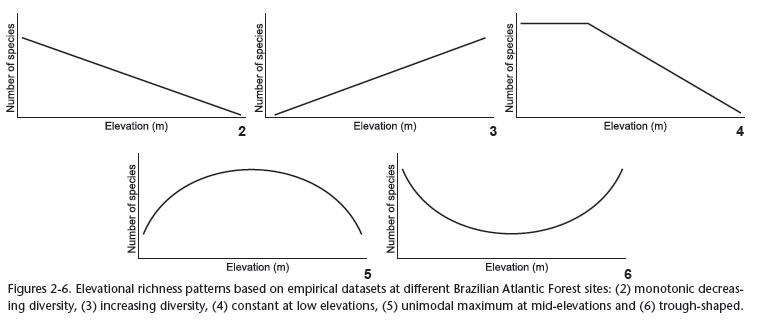The Atlantic Forest is an excellent case study for the elevational diversity of birds, and some inventories along elevational gradients have been carried out in Brazil. Since none of these studies explain the patterns of species richness with elevation, we herein review all Brazilian studies on bird elevational diversity, and test a geometric constraint null model that predicts a unimodal species-altitude curve, the Mid-domain Effect (MDE). We searched for bird inventories in the literature and also analysed our own survey data using limited-radius point counts along an 800 m elevational gradient in the state of São Paulo, Brazil. We found 10 investigations of elevational diversity of Atlantic Forest birds and identified five different elevational patterns: monotonic decreasing diversity, constant at low elevations, constant at low elevations but increasing towards the middle, and two undescribed patterns for Atlantic Forest birds, trough-shaped and increasing diversity. The average MDE fit was low (r² = 0.31) and none of the MDE predictions were robust across all gradients. Those studies with good MDE model fits had obvious sampling bias. Although it has been proposed that the MDE may be positively associated with the elevational diversity of birds, it does not fit the Brazilian Atlantic Forest bird elevational diversity.
Altitudinal gradient; avian species richness; geometric constraints; mountain ecology; null model; rain forest




